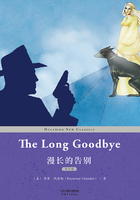Meadowlarks are members of the blackbird(山鸟类)family.Other blackbird species may have non-black females,but meadowlarks are unique in not having mostly black colors on the male.
Just looking at them,the two species are very difficult to tell apart.A key difference is the extent of yellow on the feathers below the eye.In the Western,the yellow feathers extend behind the lower jaw,while in the Eastern the yellow feathers stop on the throat below the lower line of the lower jaw.
The songs of the two are very different,however.The Eastern has a simple,clear,slurred whistle while the Western’s song is complex,garbled(断章取义,混淆)and abrupt.Meadowlarks also make some short buzzy or cackling(咯咯声)calls that are very easy to recognize once you learn to listen for them.
Males commonly use fence posts as perches(栖木,杆)while singing.They will sing to stake out a breeding territory which averages 7acres in size but may vary from 3to 15acres.The males will have more than one mate.Up to three females may nest within its territory(领土,版图).
Meadowlarks are ground nesters.They weave dried grasses into a bowl shape,typically within a larger grass clump(土块)for shelter and camouflage(伪装).An average of 5eggs are laid and they may have two clutches per year.The eggs are white with brown and lavender(淡紫色的)spots concentrated at the wider end.Incubation(孵蛋)takes two weeks and the young are full grown 6weeks after hatching.The young have some black spots on their breast but do not develop the distinctive(与众不同的)black “V”until the fall molt(换毛).Nesting and brood-rearing chores are done primarily by the female,although the male may help feed the young.
Nests are sometimes subject to brood parasitism(寄生状态,寄生病)by the Brown-headed Cowbird(Molothrus ater).Cowbirds([动]北美产的燕八哥)lay their eggs in other birds nests.Both ground-nesting and tree-nesting birds may have the cowbird’s unwanted additions in their clutches.Some species of birds will remove the intruding(闯入,侵入)eggs,abandon the nest or just build a new nest on top of the “infected”one.Other species will raise the baby cowbirds as if they were their own.
Meadowlarks are ground feeders.The majority of their food during the growing season is insects,spiders and other small invertebrates.Some seeds are eaten also,and that becomes the bulk of their food in the winter.During winter meadowlarks will form into flocks of up to a few hundred individuals which are often seen foraging in fields and pastures.
While foraging,a meadowlark walks slowly through the vegetation,occasionally(偶而)picking and probing with its long pointed bill.When it spots an enemy,it will typically freeze and hunker(盘坐)down while casting a wary eye at the source of concern.In this position,the yellow of the chest is hidden and its brown and white back feathers help it to blend into the surroundings.If the enemy approaches too close,the meadowlark will fly a short distance away and drop abruptly(突然地)back into the grass to disappear again.
The Western Meadowlark became the state bird of Kansas(堪萨斯州)on January 29,1925(Kansas Day)after a vote by over 121,000school children.The election was coordinated by Madelaine Aaron,who was then the secretary of the Kansas Audubon Society.43,895votes were cast for the Western Meadowlark and the second and third place finishers were the Bobwhite and the Cardinal.
When you visit the prairie,look and listen for meadowlarks.Depending on where you are,you may find either or both species.As with most wildlife,if you view them carefully from a non-threatening distance,you can observe their behaviors and better appreciate their place in the web of life.
The following is identification:
1.8.5inches length
2.Sharply-pointed bill
3.Buff(浅黄色)and brown head stripes(斑纹,条纹)
4.Yellow underparts with black “V”on breast
5.White flanks(腰窝,胁)with black streaks
6.Brown upperparts((鸟、兽等)位于上身的部分)with black streaks
7.Brown tail with white outer tail feathers
8.Juvenile and winter plumages somewhat duller
9.Frequents open habitats
State Flower州花
草原玫瑰在1907年成为北达科他州的州花。它一般有5个花瓣。草原玫瑰生长在路边、草场和草地上。在本州到处都可以看见这种花,花期从6月到夏末。在粉红色的花瓣中心有着黄色的花蕊。在它红褐色小枝上长着笔直的小刺,它的叶子椭圆且很有光泽。它还会结出小小的果实。
The flower has been identified as Rosa Pratincola in species.The flower sports five bright pink petals with a tight cluster of yellow stamens(雄蕊)in the center.The Wild Prairie Rose grows along roadsides,in pastures(草原,牧场),and in native meadows.
Wild roses are found throughout the state and bloom from June through late summer.The flower,in varying shades of pink,is set off by many yellow stamens in the center.
Shrub:with erect stems to 1.5ft(45cm)tall.
Twigs:red-brown with many straight spines(剌)and bristles(刚毛).
Leaves:alternate,pinnately compound,5-9leaflets;leaflets elliptic(椭圆形的),1.6-6.4cm(0.6-2.5)inches in length;glabrous([生物]无毛的,光洁的),lustrous(有光泽的,光辉的)above,soft pubescent(思春期的,有软毛的)beneath;acute at base and apex(顶点);margins coarsely(质地粗糙地,粗俗地)toothed;petiole(叶柄,柄部)glabrous([生物]无毛的,光洁的)or somewhat pubescent([生物]无毛的,光洁的);stipules([植]托叶)adnate,1-2.5cm(0.4-1in)in length,margins entire;rachis(叶轴,花轴)glabrous or somewhat pubescent.
Inflorescence:a corymb([植]伞状花序),peduncles(花梗,梗,(肿瘤或息肉的)肉茎)glabrous,flowers 2-4,2.5-5cm(1-2in)in diameter;sepals(萼片)5,lanceolate(矛尖形的,披针状的),1-1.2cm(3/8-5/8in)long;petals 5,white,obcordate([植]倒心形的);styles not exserted,but persistent;stamens numerous(众多的,许多的,无数的);flowers appear from May to August.
Fruit:a hip,12-15mm(1/2-3/5in)diameter,subglobose to ellipsoid,sepals ascending,red;nutlets(小坚果,果仁)flattened on one side,light tan,tuft of hairs at the base;fruits mature late August.
Habitat:prairies,woodland margin and disturbed areas.
Medicinal uses:The Omahas[(pl.Omaha,Omahas)奥马哈人(内布拉斯加东北部的印第安人)]steeped wild prairie rose hips and roots to treat inflammation(怒火,燃烧)of the eye.The Pawnees collected leaf galls which were crushed and applied to burns.
State Flag州旗
在蓝底的北达科他州州旗上,我们可以看见有一只老鹰,它的一只瓜子抓着橄榄枝,另一只则抓着一只箭。它的嘴衔着一条缎带,上面写着:“一个国家是由许多州组成的”。那13颗星星代表着美国最初的13个州。在老鹰头上的扇形则代表美国一个新州的诞生。在它的下方是一个红色的卷牌,上面写着:“北达科他州”。本州在1911年使用该州旗。















